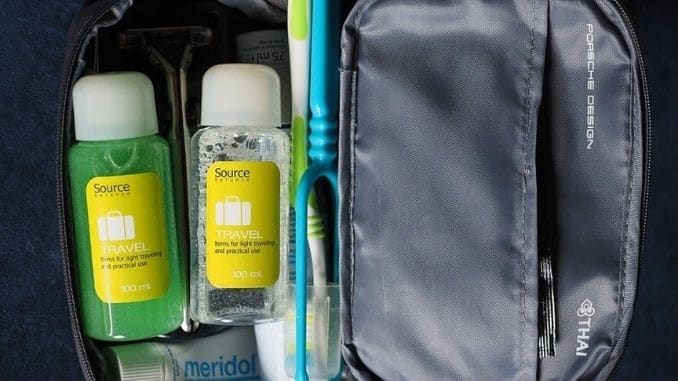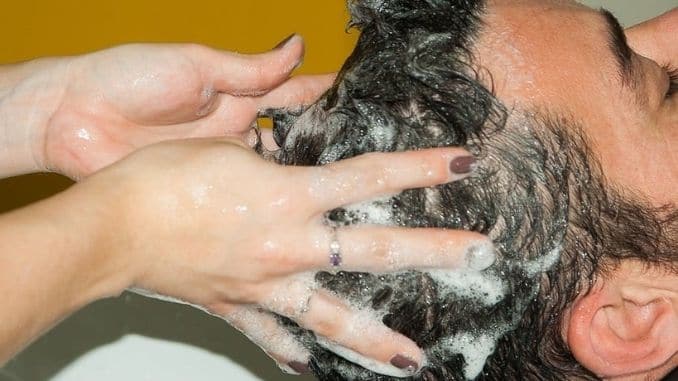
In a recent study published in the journal, Science, volatile organic compounds (VOCs) — from products like pesticides, adhesives, cleaning agents and is your shampoo toxic — were found to now rival cars as a source of air pollution. VOCs contribute to the particulates that make up smog, which has been linked with a number of health problems, including respiratory irritation, asthma, and heart disease.
Is Your Shampoo Toxic? Personal care products? Indeed, things like perfume, soap, and even shampoo could emit these dangerous compounds, exposing you to unhealthy air. “The things I use in the morning to get ready for work are comparable to the emissions that come out of the tailpipe of my car,” lead author Brian McDonald said.
Part of the reason for the change is that cars are “cleaner” these days than they used to be. Regulations have reduced emissions during the past 50 years yet many large cities still struggle with air pollution. It was when the United States National Oceanic and Atmospheric Administration (NOAA) sampled air in Los Angeles and found surprisingly high levels of VOCs that couldn’t be linked to vehicles that researchers decided to look closer.
Studies Link Many Products to Health Issues
This isn’t the first study to examine how the products we use every day could be harming our health. In 2005, researchers reported that makeup, shampoo, skin lotion, nail polish, and other personal care products contained chemicals linked to birth defects, decreased sperm counts and altered pregnancy outcomes. Other studies have linked chemicals in these products to allergic reactions, hormonal disruption, and even cancer.
Is Your Shampoo Toxic?It hard to imagine that the products on your sink could be harming you? Usually, your exposure to the chemicals is very small per-use, but the thing is, we all use these products over and over again, day after day, for many years. The National Institute of Environmental Health Sciences (NIEHS) states that the average American woman uses 12 personal care products a day and the average man six products daily. In time, that usage adds up, and some of those potentially harmful chemicals can stay in our bodies over time.
Phthalates, which are a group of plasticizing chemicals found in nail polishes, perfumes, and hair sprays, were found to be widespread in the population by the Centers for Disease Control and Prevention (CDC). “Research has found that adult women have higher levels of urinary metabolites than men for those phthalates that are used in soaps, body washes, shampoos, cosmetics, and similar personal care products,” the CDC stated.
Phthalates have been linked in studies to asthma, breast cancer, obesity, type 2 diabetes, developmental issues, autism spectrum disorders, fertility problems, and even low IQ. That’s just one group of chemicals among many.
How can you protect yourself and your family? We decided to focus on one product — shampoo — to show you exactly how.
Read the Label
Is Your Shampoo Toxic? When choosing a shampoo, many of us rely on the information on the front label. Exercise caution and avoid deception by critically assessing the information you read.
Remember that words like “natural” and “botanical” don’t really tell you much. These words remain unregulated by the U.S. Food and Drug Administration (FDA), so that means any company can use them whenever they want, regardless of what’s really in the product. There may be just one botanical or natural ingredient mixed in with a number of toxic chemicals, so ignore claims like these.
Do look for words like “unscented” or “fragrance-free,” however, as these words indicate that there are fewer fragrance chemicals in the shampoo. Under “trade secret” laws, manufacturers don’t have to list the chemicals they use to create a fragrance. These chemicals are often the most dangerous when it comes to creating allergic reactions, itching, rashes, and other health problems.
Derived from petrochemicals, fragrance chemicals encompass benzene derivatives, phthalates, and other toxins associated with serious health concerns such as hormonal disruption and cancer.
You can also look for words like “organic” or “certified organic” as well as the seals that go with these words. Regulators enforce restrictions on manufacturers, preventing them from using these terms unless their products contain at least some organic ingredients.
If it says “100 percent organic,” the product contains all organic ingredients. If it says just “organic,” that means that it contains a minimum of 95 percent organic ingredients. Finally, if it says, “made with organic …” it contains at least 70 percent organically produced ingredients.
Products labeled this way typically have fewer chemicals than non-organic products and are often some of the best products that you can choose for yourself and your family where safety is concerned. That doesn’t mean you have to choose organic, however. There are other products that are safe to use. You just have to dig a little deeper.
Avoid Potentially Dangerous Ingredients
Is Your Shampoo Toxic? After you look over the front label, it’s vital that you turn the bottle over and read the ingredient list. This is where you find out what’s really in the product, to a certain extent anyway. (Remember that manufacturers don’t have to list fragrance chemicals — only the word “fragrance.”)
If your eyes go buggy while you’re reading the list because you can’t pronounce most of the words, that’s not a good sign. That indicates that most of the ingredients are synthetic chemicals, and many of those may be potentially toxic. Here are some of the worst offenders:
-
Sulfates:
These are the ingredients that make your shampoo lather up. Called “surfactants,” they’re cleaners, but they’re particularly harsh cleansers and have been linked with dull, dry hair, scalp irritation, and even hair loss. They also produce “nitrosamine,” a substance linked to cancer formation, and may produce 1,4-dioxane as a byproduct, which has also been linked to cancer and kidney damage. Look for sodium lauryl sulfate (SLS) and sodium laureth sulfate (SLES). Once they are rinsed away, these chemicals can also harm aquatic life in our rivers and streams. Look for shampoos that are sulfate-free.
-
Parabens:
These are preservatives used to extend the shelf life of the product, but they’ve been linked in studies to hormonal disruption and even breast cancer. Avoid products with methyl, propyl, butyl and ethyl parabens.
-
Monoethanolamine (MEA), diethanolamine (DEA) and triethanolamine (TEA):
These are ammonia compounds used as emulsifiers and foaming agents and can cause allergic reactions, dryness and skin irritation.
-
Ureas:
These are preservatives as well, and have been found to be the primary cause for contact dermatitis. They can also release formaldehyde as a byproduct, which is a known carcinogen. Look for Diazolidinyl urea, imidazolidinyl urea, DMDM hydantoin and sodium hydroxymethylglycinate.
-
Polyethylene glycol (PEG) and polypropylene glycol (PPG):
These are petroleum-based ingredients that promote moisture but have also been linked to allergic reactions, eczema, and developmental problems. These may also be contaminated with 1,4-dioxane, a carcinogen.
-
Quaternium-15:
This is another chemical derived from ammonia and used as a preservative. It can release formaldehyde, which is a carcinogen.
-
Fragrance:
As mentioned above, if you see this word on the ingredient list, you can bet there are additional chemicals in there that you’re not allowed to see. Look instead for products scented with natural oils.
Shop Differently
Is Your Shampoo Toxic?: Once you’ve checked the ingredient list on your shampoo bottle, and you found some (or a lot) of the ingredients listed above, plus other chemical ingredients that you couldn’t pronounce. What do you do now?
The easiest way to find safer products is to change how you shop. Instead of buying your shampoo in the regular aisles of the grocery store or at the department store, look for either a whole foods store or the organic department in your grocery store or go online.
There are many companies out there now that recognize the demand for safer products, and they’re producing shampoos that contain more natural ingredients like essential oils, proteins, healthy fatty acids, and natural conditioners. When you shop at these types of places, your odds of finding a safe shampoo go up significantly.
Next, turn over the bottles and read the ingredient list. You may still see some chemicals, but you should see a lot fewer than you do on your regular shampoo. You can also look for brands that make a point to use safer ingredients. The more you shop in these areas, the more familiar you’ll get with these brands.
Finally, consider going online for your safer shampoo. Google “organic hair care” or “organic shampoo” for organic brands, or choose “paraben-free shampoo” or “sulfate-free shampoo” to find the brands that are more likely to carry the types of shampoos that you’ll feel safer using for your family.
Use Less
Is Your Shampoo Toxic?: There’s one more thing you can do to help decrease your exposure to potentially toxic chemicals: cut back on your use of personal care products in general.
Take a break from your shampoo once or twice a week, for example. You’ll not only reduce your exposure but you’ll help your hair too. Shampoo tends to strip hair of its natural oils and conditioners, making it dull and dry over time. You can help your hair recover by giving it a break each week.
Next, see if you can have “makeup-free” days, or if you can cut down on how many days you use perfume or cologne. Little by little, you can not only make safer choices with your products, but you can also cut back on how much you’re using them. These two steps together are likely to help keep you and your family safe.
What we put on our bodies is vitally important for our health. So is what we put in our bodies. For your guide to the best foods to heal your body, check out The Best Foods that Rapidly Slim & Heal in 7 Days, here!





